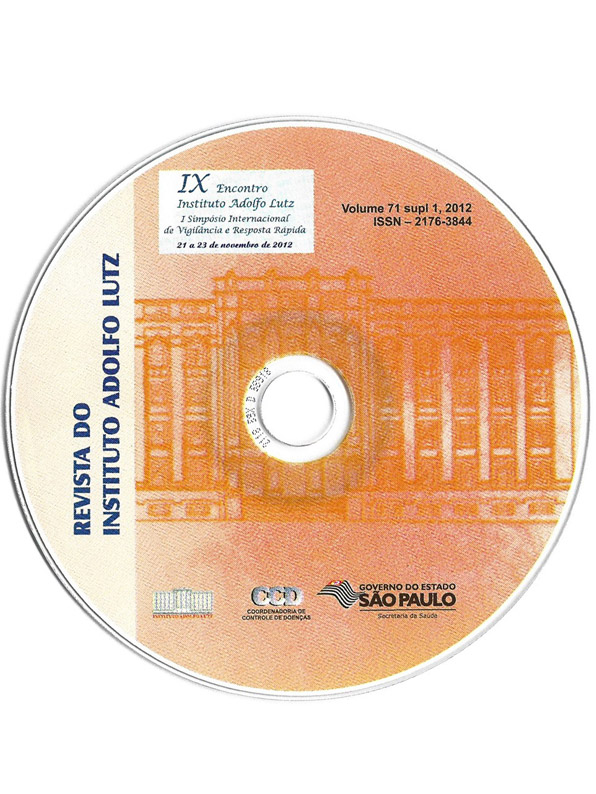Resumo
Gastroenteritis is the leading problem in indians communities. During national rotavirus (RV) surveillance 2008-2011 G2P[4], G3P[8] and G8P[6] genotypes were detected in native children =3 years from indigenous villages in western region of Brazil. The aim of this work was to carry out sequence analysis of the two outer capsid proteins (VP4 and VP7) in order to obtain further information on the genetic relationship between human and animal RV. This retrospective study was conducted with convenient surveillance specimens. RV were detected using ELISA, PAGE, and genotyped by RT-PCR. The genetic relationship was analyzed by sequencing of selected strains: two G2 (IAL-RN191, IAL-RN71094), one G8(IAL-RN376), two P[6] (IAL-RN376, IAL-RN377), and one G3 (IAL-R2758). IAL G2 RV sequencesshowed 79%-78.6% similarity compared to animal representative strains. IAL-RN376 G8 sequence shares aclade with bovine and human strains, displaying highest nucleotide identity to African human strains(DRC86-98%, DRC88-97.9%), following by the African bovine NGRBg8 strain (95.1%). IAL-RN376 andIAL-RN377 P[6] sequences showed the highest identity to human R330 strain (99.6%). In addition, IALP[6] sequences were also closely related to an African fruit bat RV strain (KE4852/07) (94.6%). IAL-R2758G3 sequence share the highest nucleotide similarity to human strains (98.6-99%), however, demonstratedmoderate-to-low nucleotide identity to animal strains (90-70.5%), highlighting two feline strains: Cat2(89.5%) and BA222 (90%). Taking the risks, this study suggest that a reassortment between bovine RV G8and bat RV P[6] could be occurred in animal host(s) preceding the transmission to human; nevertheless, alsosuggest that humans could serve as a RV reservoir, resulting in anthropozoonotic transmission. Inindigenous population, an anthropozoonotic transmission is probably fairly frequent once the inhabitantslive in close contact with animals together with poor hygienic conditions.

Este trabalho está licenciado sob uma licença Creative Commons Attribution 4.0 International License.
Copyright (c) 2012 A Luchs
